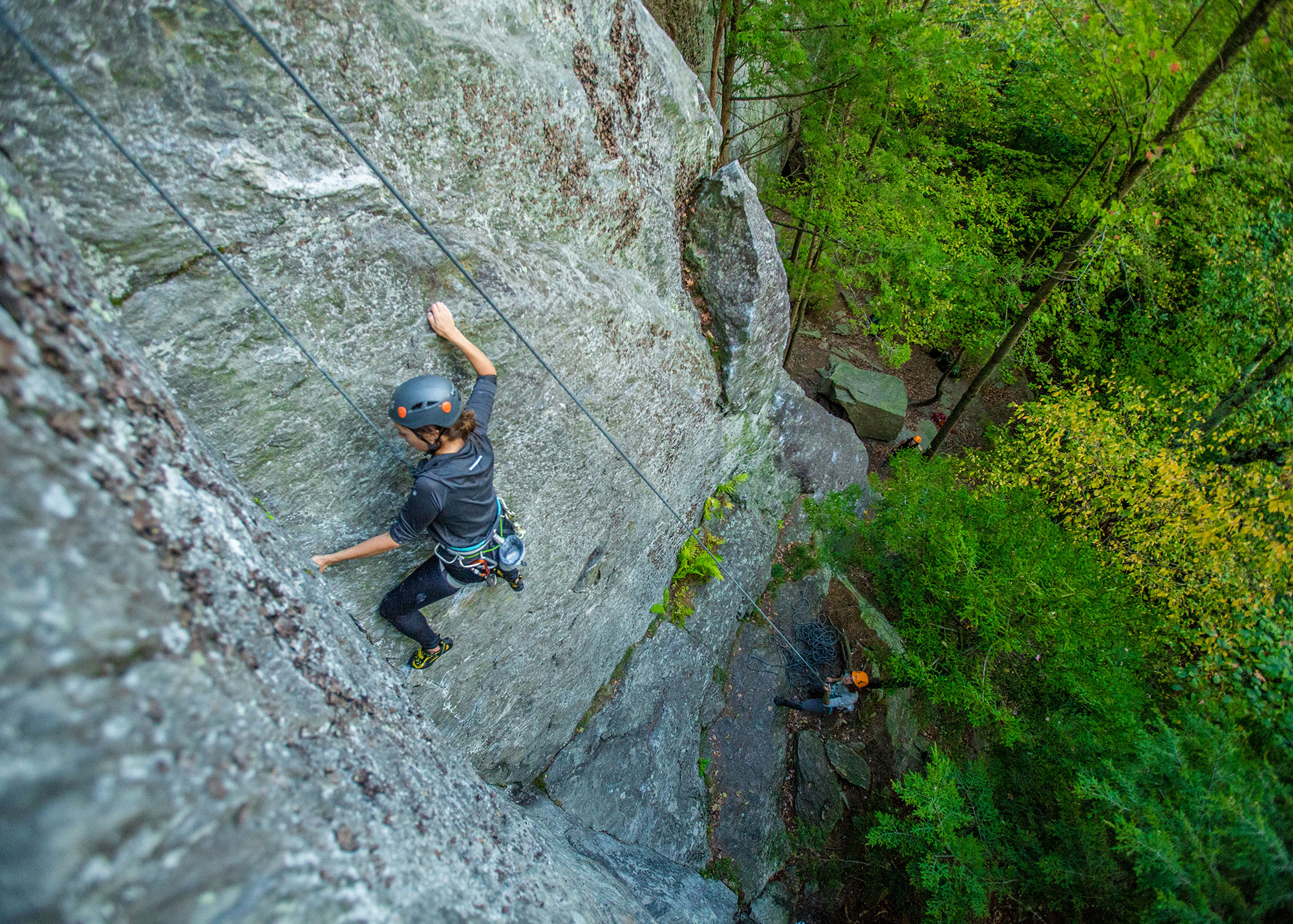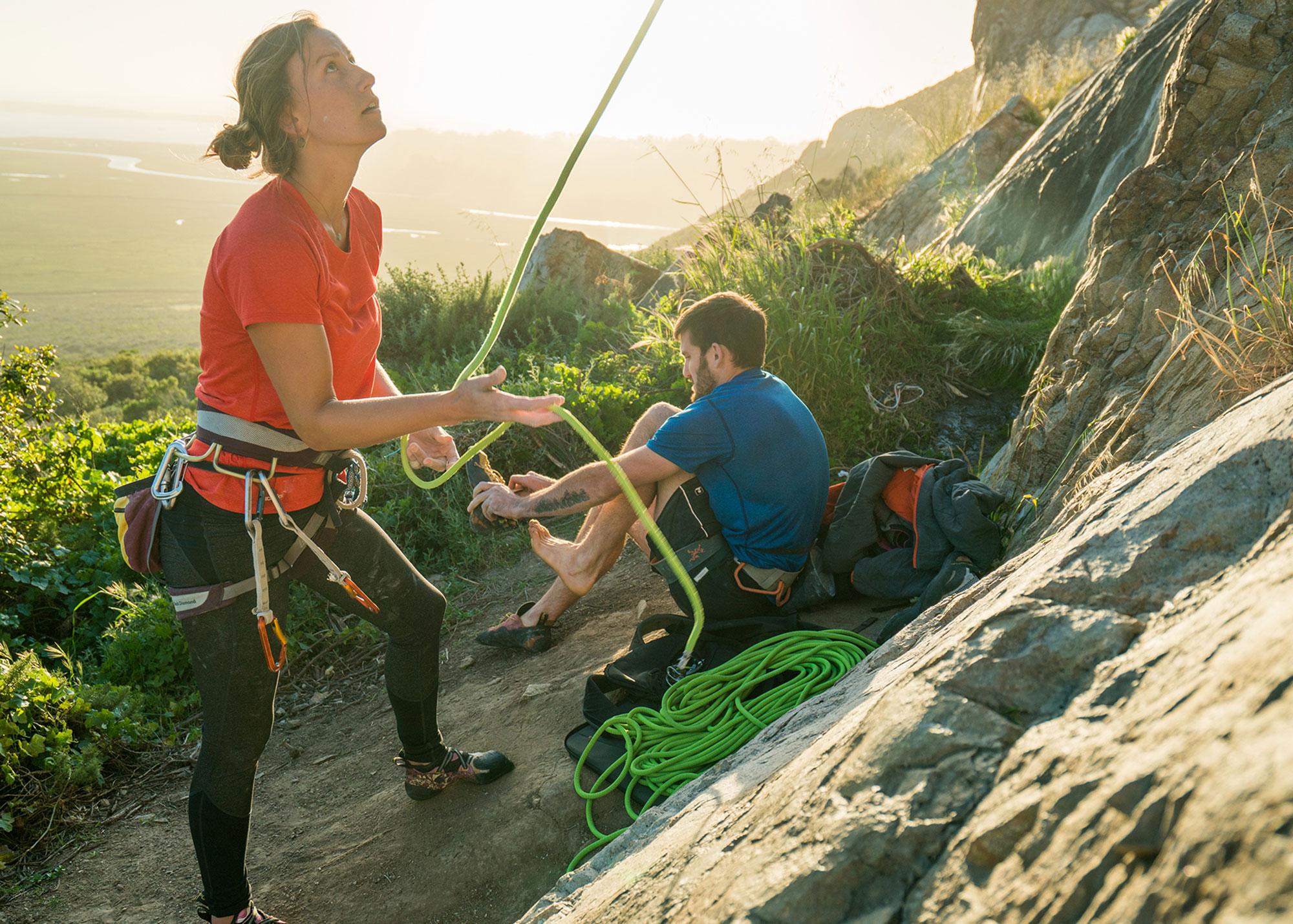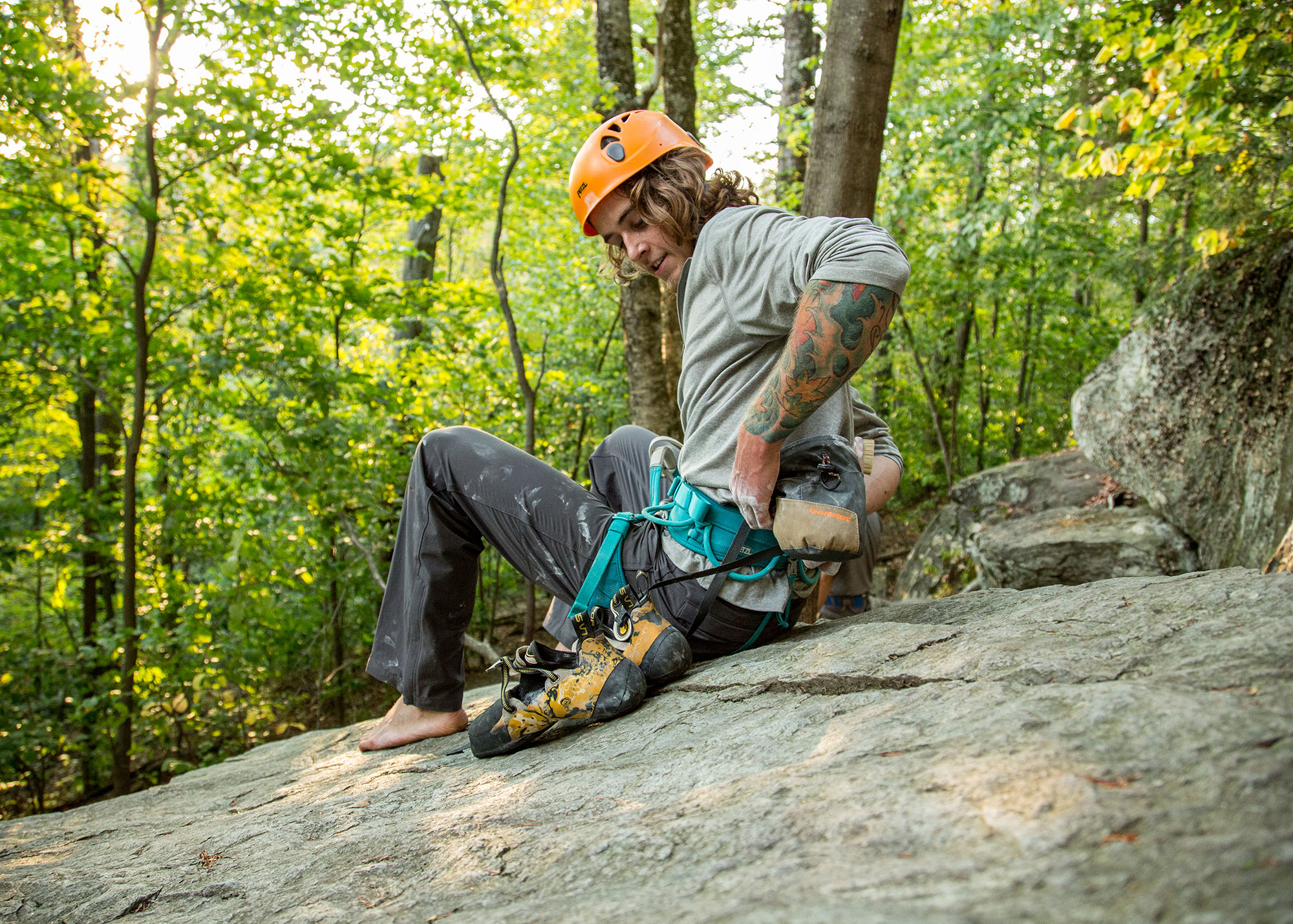The days are getting longer, the weather warmer, and most importantly the rock drier. Before you know it, rock climbing season will be here. Whether you’re stoked to send your sport project, or psyched on a mega multi-pitch climb, you’ll want this high-tech climbing gear on your rack or in your pack.
1. Ace the Approach
There’s nothing more stoke-crushing than getting lost on the approach. To avoid this massive time suck, spend some pre-climb time studying the approach so that you and your partners get there efficiently. For approaches involving third- and fourth-class terrain, invest in a good pair of approach shoes. The Scarpa Crux features the stiffness and protection of a traditional approach shoe in a streamlined and lightweight design, making it perfect for your next trip up to something like the Northeast Ridge of the Pinnacle.
2. Lose Weight
Reducing the weight of your rack is a great way to up your chances of sending your trad project. One way to do that is to ensure that you’re only carrying the gear you need to and up the route. Another is to make sure that your gear is as light as possible. Last spring, Black Diamond’s venerable C4 Camalots received a significant update, getting 17% lighter (and a brighter color treatment, making them easier to identify). Wide crack aficionados will also note that the #4, #5, and #6 cams now feature a trigger keeper, allowing them to be carried with the lobes engaged for easier racking.

3. Keep Your Head in the Game
If you’re tying in, you should be wearing a helmet for safety’s sake. Over the years, helmets have saved numerous lives along with becoming increasingly light and comfortable. Helmets are also becoming more versatile. Take the Petzl Meteor, a climbing helmet that is also a CE-certified ski touring helmet and features a ski-goggle friendly shape—a great choice if you’re just as likely to plug gear on Cathedral on an April day as you are to ski Tucks.
4. Score Faster Placements
Picking the right piece for the right spot then placing it efficiently is a sure way to avoid the dreaded forearm pump while negotiating the crux. One way to help yourself is by scoping the climb from the ground with an eye toward how you’ll protect the pitch. Another way is to add some of the new Black Diamond Z4s to your rack. Combining the best elements of the C3 and X4 camming units, the Z4 cams are rigid when the trigger is pulled and flexible when released, allowing for easier placements and reducing the chance of placed gear walking. Look for these clever cams in both regular sizes (#0, .1, .2, .3, .4, .5, and .75) and off-sets.
5. Belay Better
If you climb with speedy seconds or slab masters that float up pitches faster than you can reel rope in, you’ll want to familiarize yourself with the Kong GiGi and the CAMP Ovo. Used primarily to belay two seconds at once, these lightweight devices—the GiGi is just 2.4 oz—excel at moving rope. This is because the slots are so much easier to pull rope through than a Petzl Reverso or Black Diamond ATC Guide.
6. Get Some Crack Gloves
Developing your movement skills is another way to improve your efficiency on a route. One means of doing that is to practice a host of climbing techniques—face climbing, stemming, chimneying, and jamming, to name a few. Of course, finding stellar jams in the Northeast can be hard; There just aren’t that many cracks here, and many of those that exist are rough on the hands. A modern update to the classic tape glove, the Outdoor Research Splitter Gloves are a fast favorite of crack-addicted climbers and a great way to minimize some of the pain from crack climbing. Splitter gloves are easier to take on and off than traditional tape gloves, which is great when rotating between crack climbing and face climbing, and can be reused time and time again which is something our inner environmentalists appreciate.

7. Learn Some Rope Tricks
The Mountain Guide Manual by Marc Chauvin and Rob Coppolillo is a must-read for any climber looking to improve their efficiency on the rock and in the mountains. Start playing with their numerous strategies for moving as parties of two and three and you’ll soon realize how much you can do with a rope.
8. Nail the Descent
Whether they’re rapping multiple pitches on these popular Crawford Notch slab climbs or just cleaning a classic Rumney route, many climbers use some sort of personal anchor system (PAS). One awesome PAS is the Petzl Connect Adjust. Super easy to use, the Connect Adjust is unlike other PAS in that it’s made with actual climbing rope which bolsters its strength and adds dynamism to the anchor.
9. Get Sporty
If you frequently find yourself clipping bolts with a smaller partner, the Eldrid Ohm is an easy way to keep the belayer from getting yanked skyward and the climber from hitting the ground. Described by Eldrid as an “assisted-braking resistor,” the Ohm creates increased friction on the rope when clipped to the first bolt for safer sport climbing.
10. Stay Safe
The Kailas Stick Clip has you covered if you love sport climbing, but hate toting around an annoyingly long stick clip for those high first bolts and sketchy first clips. Unlike the telescoping stick clips of yesteryear, the Kailas Stick Clip uses tent-pole style construction (similar to collapsible trekking poles such as the Black Diamond Distance Z Trekking Poles), which allows it to stash inside your pack. An added bonus of the Kailas Stick Clip’s packability is that it’s awesome for traveling sport climbers, as it fits easily in most luggage.
Have a favorite piece of climbing gear you can’t live without? Super psyched on a new piece of climbing tech? Tell us about it in the comments below!

Tim Peck and Doug Martland
Tim and Doug met long ago at the Eastern Mountain Sports in Canton, Massachusetts. Bonding over a love of slick Quincy Quarry granite, White Mountain sufferfests, and scheming up adventures while folding tee-shirts, today Tim and Doug collaborate to write about their favorite outdoor activities and occasionally get nostalgic about tee-shirt tables.




